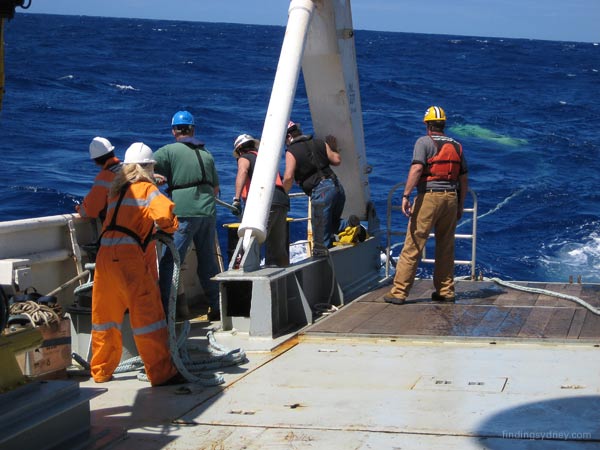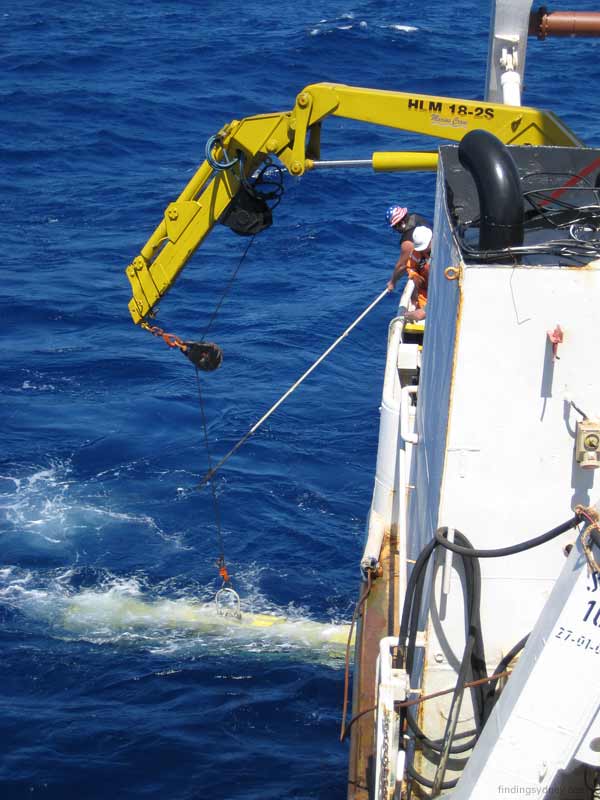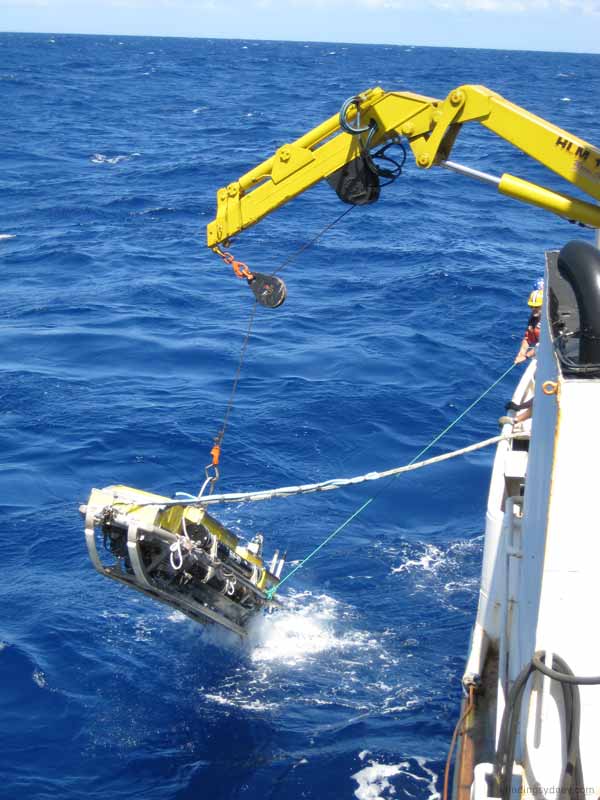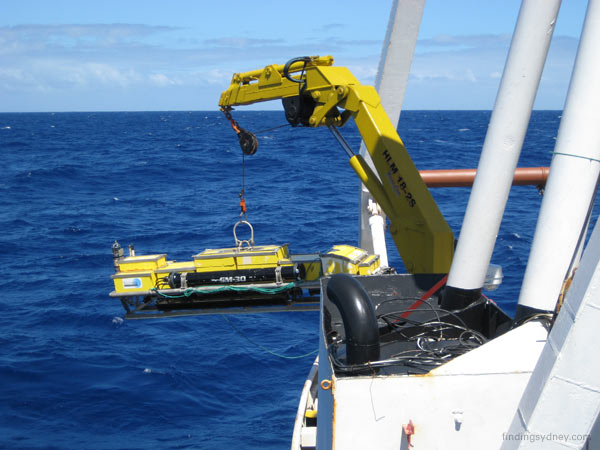David Mearns - Search Director, The Finding Sydney Foundation
Shipwreck search projects generally fall into a rythym of running the side-scan sonar down a trackline followed by a turn to the next search trackline, repeated many times over. So a good rythym would be line, turn, line, turn, line, turn, etc. Unfortunately, our rythym has been line, recover for repairs, partial line, recover for bad weather, wait on weather, line, recover for repairs.
Whilst it is frustrating to have had such an unlucky start to the search for HMAS Sydney, I also know that we are due better weather than we have had and that the problems with the SM30 sonar towfish are slowly but surely being sorted out. The Williamson & Associates technicians are fully committed and working very hard to deliver the best quality sonar imagery.
Our project schedule does include a contingency for time lost due to such problems although I would have rather not used up this contingency so early in the project. It reminds me that we had a similar situation during the Hood & Bismark project in 2001 when we lost the first three days to a Force 10 storm in the Bay of Biscay. Knowing how that project ultimately turned out (we found and filmed both wrecks well within our alloted schedule) gives me confidence we could repeat that performance here off the WA coast.
The following sequence of photos shows the recovery of the SM30 towfish.

Above Photograph - Hauling the SM30 sonar towfish back towards the vessel.

Above Photograph - Using a boat hook to grab a tag-line to steady the SM30 sonar towfish.

Above Photograph - SM30 sonar towfish breaks the water.

Above Photograph - Craning the SM30 sonar towfish inboard.
John Perryman - Senior Navy Historian
Today’s dawn brought with it the end of our north-south run during which we had seen a slight deterioration in our SM30 sonar signal. After some discussion it was determined to recover the tow-fish and replace the connection on the umbilical cord through which data is transferred back to the survey room. With blue skies above us and in reasonable seas, the fish was successfully recovered during the forenoon and throughout the afternoon the Williamson technicians set about rectifying the faults.
The sonar was not the only ‘fish’ recovered. During the last few days of rough weather several flying fish had inadvertently made unscheduled landings on the Geosounder’s quarter-deck during their brief ascent from the sea. Needless to say, they were returned to whence they came.
The intention is now to redeploy the SM30 tow-fish later this evening with a view to commencing our next search run as soon as possible. Although this is another break in our schedule, it has provided a good opportunity to review our research work and conclusions as well as those of other independent researchers who, although not directly involved in this project, have done much to keep the interest in the story of Sydney alive.
IMPORTANT NOTICE: The Material (including photographs) available in the "Press Room" section of this Website may be used/reproduced unaltered by your organisation (unless stated otherwise within the content description) subject to the terms and conditions set out in the Legal Section AND any Material (including photographs) which you use/reproduce must credit the source as "The Finding Sydney Foundation" and, as an option, you may also link the source statement with the website address http://www.findingsydney.com/.